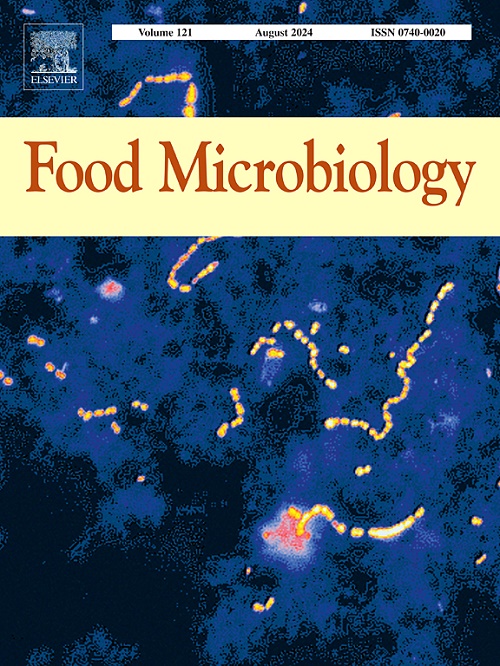N-Acetyl-O-methyl-tyrosine from Bipolaris bicolor: A novel fungicide for postharvest anthracnose and citrus preservation
IF 4.5
1区 农林科学
Q1 BIOTECHNOLOGY & APPLIED MICROBIOLOGY
引用次数: 0
Abstract
The necessity for safe and effective alternatives to conventional chemical fungicides is underscored by postharvest citrus fruit losses due to anthracnose, caused by Colletotrichum gloeosporioides. In this context, the biocontrol fungus Bipolaris bicolor WZU-HOG4, isolated from Ougan pericarp, was identified as possessing antimicrobial activity. Through bioassay-guided fractionation and subsequent metabolite profiling, N-Acetyl-O-methyl-tyrosine was identified as the active antifungal compound using NMR and HRESIMS. This compound demonstrated significant inhibitory effects against C. gloeosporioides and other pathogens, exhibiting a relatively broad-spectrum antifungal activity. Molecular docking analysis indicated that N-acetyl-O-methyl-tyrosine binds to tyrosinase with greater affinity than Vitamin C, effectively inhibiting its activity. Furthermore, Ougan fruits treated with the compound exhibited increased activities of antioxidant enzymes SOD, POD, and CAT, reduced MDA content, and decreased oxidative stress during storage. Cytotoxicity assays conducted on HEK-293 cells confirmed the compound's safety at the tested concentrations. N-acetyl-O-methyl-tyrosine emerges as a promising natural antifungal and tyrosinase inhibitor for citrus postharvest preservation, providing a safe alternative to chemical preservatives for extending shelf life.
n -乙酰- o -甲基酪氨酸:一种用于采后炭疽病和柑橘保鲜的新型杀菌剂
由于炭疽病引起的柑橘果实采后损失,强调了开发安全有效的化学杀菌剂替代传统杀菌剂的必要性。本研究从欧干果皮中分离得到的双色双极性生物防治真菌WZU-HOG4具有抑菌活性。通过生物测定引导分离和随后的代谢物分析,利用NMR和hresms鉴定了n -乙酰基- o -甲基酪氨酸为活性抗真菌化合物。该化合物对gloeosporioides等病原菌具有明显的抑制作用,具有较广谱的抗真菌活性。分子对接分析表明,n -乙酰基- o -甲基酪氨酸与酪氨酸酶的结合比维生素C更有亲和力,有效抑制了酪氨酸酶的活性。处理后的瓯柑果实SOD、POD、CAT等抗氧化酶活性增加,MDA含量降低,氧化应激降低。对HEK-293细胞进行的细胞毒性试验证实了该化合物在测试浓度下的安全性。n -乙酰基- o -甲基酪氨酸是一种很有前途的天然抗真菌和酪氨酸酶抑制剂,可用于柑橘采后保存,是化学防腐剂的安全替代品,可延长柑橘的保质期。
本文章由计算机程序翻译,如有差异,请以英文原文为准。
求助全文
约1分钟内获得全文
求助全文
来源期刊

Food microbiology
工程技术-生物工程与应用微生物
CiteScore
11.30
自引率
3.80%
发文量
179
审稿时长
44 days
期刊介绍:
Food Microbiology publishes original research articles, short communications, review papers, letters, news items and book reviews dealing with all aspects of the microbiology of foods. The editors aim to publish manuscripts of the highest quality which are both relevant and applicable to the broad field covered by the journal. Studies must be novel, have a clear connection to food microbiology, and be of general interest to the international community of food microbiologists. The editors make every effort to ensure rapid and fair reviews, resulting in timely publication of accepted manuscripts.
 求助内容:
求助内容: 应助结果提醒方式:
应助结果提醒方式:


